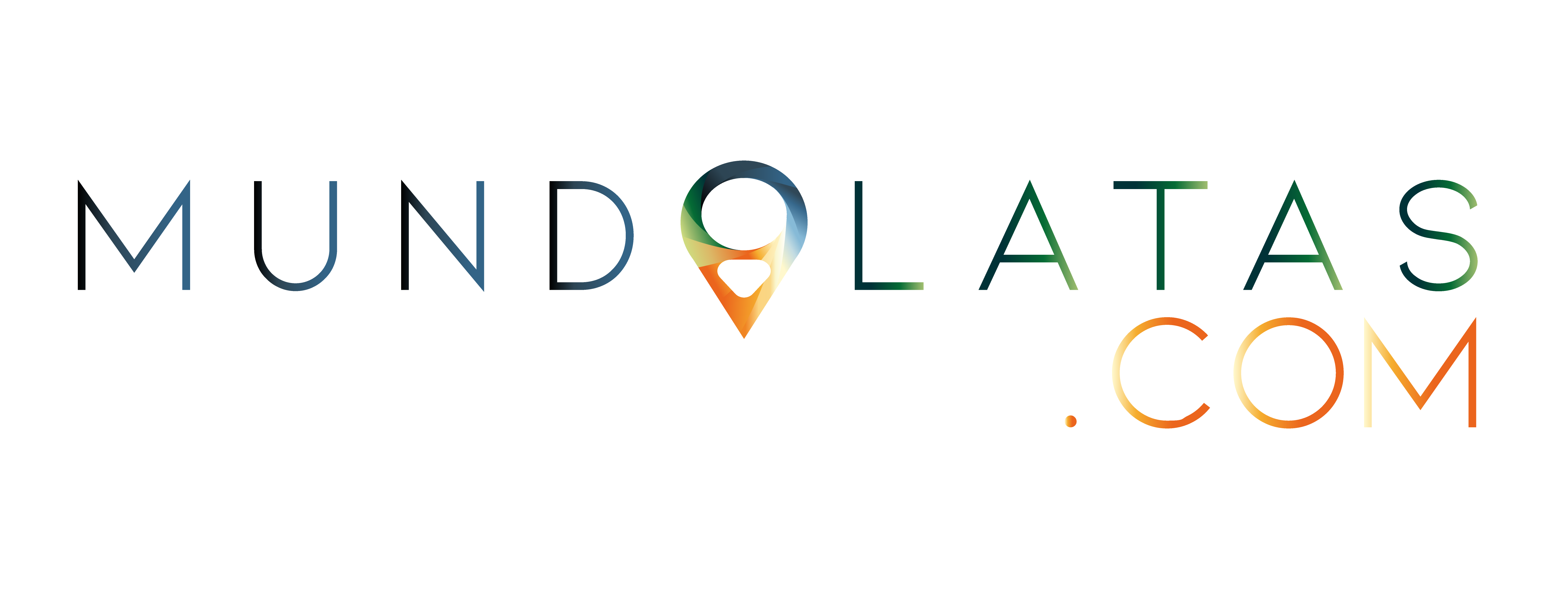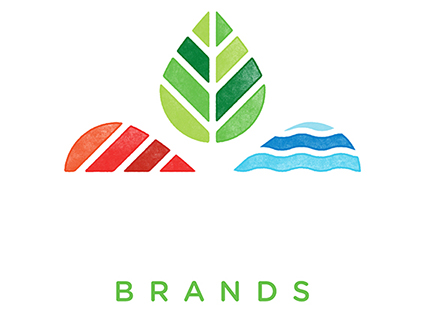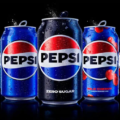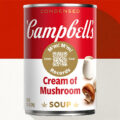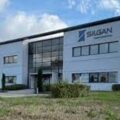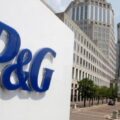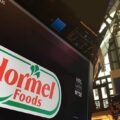Conagra Brands recently reported results for the first quarter of fiscal 2025, which ended on August 25, 2024. All comparisons are to the prior year fiscal period unless otherwise noted.
In this regard, reported net sales decreased 3.8%; organic net sales decreased 3.5%; reported operating margin was 14.4%, a decrease of 247 basis points and adjusted operating margin was 14.2%, a decrease of 244 basis points.
Reported diluted earnings per share were $0.97, an increase of 44.8 %. Adjusted earnings per share were $0.53, a decrease of 19.7%.
The company reaffirms its fiscal 2025 guidance reflecting organic net sales of (1.5)% to stable compared to fiscal 2024; on the other hand, adjusted operating margin is forecast between 15.6% and 15.8%: adjusted EPS between $2.60 and $2.65 and free cash flow conversion of approximately 90%.
Sean Connolly, president and chief executive officer of Conagra Brands, said the team performed well to deliver on key priorities across the company during the first quarter in what remained a challenging environment, adding, “Our domestic retail volume progressed in line with expectations, we increased share across the portfolio and made progress on our portfolio restructuring initiatives. Overall, we are reaffirming our fiscal 2025 guidance, reflecting confidence in the underlying momentum of our business.”
Total results for the company’s first quarter.
For the quarter, net sales decreased 3.8% to $2.8 billion, reflecting:
⦁ a 3.5% decrease in organic net sales,
⦁ a decrease of 0.4% due to the unfavorable impact of the exchange rate; and
⦁ 0.1% increase due to favorable impact of mergers and acquisitions.
The 3.5% decline in organic net sales was due to a 1.9% negative impact on price/combination ratio, largely driven by the company’s strategic investments in the quarter, and a 1.6% decline in volume. In addition, the company estimates that results for the quarter were impacted by approximately $27 million due to temporary manufacturing disruptions in the Hebrew National business during the key grilling season.
Gross profit decreased 10.2% to $739 million in the quarter, and adjusted gross profit decreased 9.4% to $726 million. First quarter gross profit declined as higher productivity was more than offset by the negative impacts of lower organic net sales, cost of goods sold inflation and unfavorable operating leverage. In addition, gross profit was negatively impacted by approximately 11 million due to temporary manufacturing disruptions in the Hebrew National business. Gross margin decreased 189 basis points to 26.5% in the quarter, and adjusted gross margin decreased 163 basis points to 26.0%.
Selling, general and administrative (SG&A) expenses, which include advertising and promotion (A&P) expenses, increased 1.1% to $338 million in the quarter, driven primarily by higher incentive compensation compared with the prior-year quarter, partially offset by a 14.0% decline in A&P. Adjusted SG&A, which excludes A&P, increased 7.3% to $277 million, driven primarily by higher incentive compensation compared to the prior-year quarter.
Net interest expense was $106 million in the quarter, a decrease of 0.1% compared to the prior-year period due to a reduction in total debt.
The average diluted share count for the quarter was 480 million shares, reflecting $64 million in share repurchases during the first quarter.
For the quarter, net income attributable to Conagra Brands increased 46.0% to $467 million, or $0.97 per diluted share compared to $320 million, or $0.67 per diluted share in the prior year quarter, primarily driven by the release of a provision resulting in an income tax benefit of $210.4 million in the first quarter of fiscal 2025. Adjusted net income attributable to Conagra Brands decreased 20.0% to $253 million, or $0.53 per diluted share, primarily as a result of lower gross profit and higher selling, general and administrative expenses.
Adjusted EBITDA, which includes equity method investment earnings and non-pension and postretirement noninterest expense (income), decreased 13.8% to $528 million in the quarter, driven primarily by the decrease in adjusted operating earnings.
First quarter results for the grocery and snacks segment.
Grocery and Snacks segment net sales decreased 1.7% to $1.2 billion in the quarter, reflecting:
⦁ a 1.9% decrease in organic net sales; and
⦁ a 0.2% increase from the favorable impact of mergers and acquisitions.
The organic net sales decrease was due to a price/mix decrease of 0.1%, attributable in part to an increase in strategic investments, and a volume decrease of 1.8%. The company gained dollar share in the snacks and staples categories, including microwave popcorn, seeds, pudding and pickles.
Segment operating income decreased 3.7% to $249 million in the quarter and adjusted operating income decreased 3.8% to $253 million as higher productivity and lower A&P and SG&A expenses were more than offset by the negative impacts of cost-of-goods-sold inflation, lower organic net sales and unfavorable operating leverage.
Refrigerated and Frozen segment first quarter results
Reported and organic net sales for the Refrigerated and Frozen segment decreased 5.7% to $1.1 billion in the quarter as price/mix decreased 5.8%, primarily attributable to an increase in strategic investments, and volume increased 0.1%. In addition, the company estimates that results for the quarter were impacted by approximately $24 million due to temporary manufacturing disruptions in the Hebrew National business during the key grilling season. The company gained dollar share in selected categories, such as single-serve frozen meals, multi-serve frozen meals and frozen breakfast.
Segment operating profit decreased 11.6% to US$176 million in the quarter. Adjusted operating profit decreased 21.0% to $159 million as higher productivity and lower manufacturing and selling, general and administrative expenses were more than offset by the negative impacts of lower organic net sales, cost of goods sold inflation and unfavorable operating leverage. In addition, the company estimates that operating profit was negatively impacted by approximately $10 million due to temporary manufacturing disruptions in the Hebrew National business.
International segment first quarter results
International segment net sales decreased 0.4% to $259 million in the quarter, reflecting:
⦁ a 3.4% decrease due to the unfavorable impact of foreign exchange; and
⦁ a 3.0% increase in organic net sales.
On an organic net sales basis, price/mix increased 2.4% and volume increased 0.6%, driven primarily by a solid performance in the company’s Global Exports business.
Segment operating income increased 42.1% to US$34 million in the quarter, primarily due to the settlement of certain non-cash restructuring charges from the prior-year period. Adjusted operating income decreased 15.5% to US$36 million as the benefits of higher organic net sales and productivity were more than offset by the negative impacts of an unfavorable exchange rate and cost-of-goods-sold inflation.
Foodservice segment first quarter results
Foodservice segment net sales decreased 7.8% to $267 million in the quarter, reflecting:
⦁ a 7.9% decrease in organic net sales; and
⦁ a 0.1% increase due to the favorable impact of mergers and acquisitions.
Organic net sales were driven by a 3.2% price/mix increase and an 11.1% volume decrease due to the continued impact of the previously disclosed lost business and continued weakness in restaurant traffic.
Segment operating income decreased 20.4% to US$35 million. Adjusted operating income decreased 13.8% to $35 million in the quarter as higher productivity was more than offset by the negative impacts of lower organic net sales, cost of goods sold inflation, unfavorable operating leverage and one-time costs related to capital investment projects.
In addition, the company estimates that organic net sales in the quarter were impacted by approximately $3 million and gross profit was impacted by approximately $1 million due to temporary manufacturing disruptions in the Hebrew National business.
Other first quarter items
Corporate expenses increased 151.2% to $92 million in the quarter and adjusted corporate expenses increased 34.1% to $85 million in the quarter, driven primarily by higher incentive compensation compared to the prior year quarter.
The company incurred non-service income for pension and post-retirement periods of $3.1 million in the quarter, compared to $0.3 million of expense in the prior year quarter, primarily due to lower interest costs.
For the quarter, equity method investment earnings decreased 18.1% to $29 million as results from the company’s joint venture, Ardent Mills, reflected slightly lower volume trends in the milling industry.
For the quarter, the effective tax rate was (42.4)%, compared to 23.5% in the prior year quarter. The effective tax rate in the first quarter reflected a deferred tax benefit of $210.4 million which related to the release of valuation allowances recorded against certain deferred tax assets. The adjusted effective tax rate was 22.1%, compared with 23.6% in the prior year quarter.
In the quarter, the company paid a dividend of $0.35 per share.
Cash Flow and Debt Update
During the first quarter, the company generated $269 million in net cash flows from operating activities compared to $444 million in the prior year period, driven primarily by lower operating income and anticipated changes in working capital. Capital expenditures were $133 million compared with $144 million in the prior-year period. In addition, our free cash flow decreased from the prior year quarter by $164 million to $136 million . Dividends paid increased 6.4% to $167 million .
The company closed the quarter with net debt of $8.6 billion , representing a 5.8% reduction in net debt from the same period last year, resulting in a net leverage ratio of 3.60x at the end of the quarter.
Outlook
The company reaffirms its fiscal 2025 guidance reflecting:
⦁ Organic net sales of (1.5)% to stable compared to fiscal 2024
⦁ Adjusted operating margin between 15.6% and 15.8%
⦁ Adjusted EPS between $2.60 and $2.65
⦁ Free cash flow conversion of approximately 90%
⦁ Net gearing ratio of approximately 3.2x
In addition, the company now expects capital expenditures of approximately $450 million and full year net inflation (input cost inflation, including the impacts of hedges and other sourcing benefits) of approximately 3.2%. Other guidance metrics, including interest expense, adjusted effective tax rate, Ardent Mills contribution and pension income that were provided in our fiscal fourth quarter 2024 earnings release, remain unchanged.
The inability to predict the amount and timing of the impacts of exchange rates, acquisitions, divestitures and other items affecting comparability makes a detailed reconciliation of non-GAAP forward-looking financial measures impracticable. See the end of this release for more information.
Items affecting earnings per share (EPS) comparability
The following items are included in earnings per share (EPS) of $0.97 for the first quarter of fiscal 2025 (EPS amounts are rounded and net of tax). Refer to the reconciliation schedules at the end of this release for further details.
⦁ Approximately $0.01 per diluted share of net expense related to restructuring plans.
⦁ Approximately $0.03 per diluted share of net benefit related to fire-related insurance recoveries.
⦁ Approximately $0.01 per diluted share of net expense related to legal matters.
⦁ Approximately $0.44 per diluted share of net income related to a valuation allowance adjustment.
⦁ Approximately $0.01 per diluted share of net expense related to rounding.
The following are included in earnings per share of $0.67 for the first quarter of fiscal 2024 (earnings per share amounts are rounded and calculated on an after-tax basis). Refer to the reconciliation schedules at the end of this release for further details.
.
⦁ Approximately $0.04 per diluted share of net expense due to restructuring plans.
⦁ Approximately $0.04 per diluted share of net income related to corporate hedging derivative gains.
⦁ Approximately $0.01 per diluted share of net income related to rounding.
Please note that certain prior year amounts have been reclassified to conform to the current year presentation.
Discussion of Results and Outlook
Conagra Brands will broadcast pre-recorded comments prior to hosting a live Q&A conference call and webcast at 9:30 a.m. ET today to discuss the company’s results and outlook. The live webcast Q&A conference call, pre-recorded commentary, transcript of the pre-recorded commentary and presentation slides will be available.
at www.conagrabrands.com/investor-relations under Events and Presentations. The Q&A conference call can be accessed by dialing 18778830383 for U.S. participants and 14129026506 for all other participants and using access code 7095043. Call 10 to 15 minutes prior to the call start time. A replay of the conference call Q&A will be available at www.conagrabrands.com/investor-relations under Events and Presentations until on October 2, 2025.
About Conagra Brands
Conagra Brands, Inc. (NYSE: CAG), is one of North America’s leading branded food companies . We combine a 100-year history of quality food manufacturing with agility and a relentless focus on collaboration and innovation. The company’s portfolio continually evolves to meet consumers’ ever-changing food preferences. Conagra’s brands include Birds Eye®, Duncan Hines®, Healthy Choice®, Marie Callender’s ®, Reddi-wip®, Slim Jim®, Angie’s® BOOMCHICKAPOP® and many more. As a corporate citizen, our goal is to do the right thing for our business, our employees, our communities and the world. Headquartered at Chicago , Conagra Brands generated fiscal 2024 net sales of more than $12 billion . For more information, visit www.conagrabrands.co .
Note to Forward-Looking Statements
This document contains forward-looking statements within the meaning of the federal securities laws. Examples of forward-looking statements include statements about the Company’s expected future financial performance or position, results of operations, business strategy, management’s plans and objectives for future operations and other statements that are not historical facts.
You can identify forward-looking statements by the use of forward-looking words, such as “may,” “will,” “anticipate,” “expect,” “believe,” “plan,” “should” or comparable terms. Readers of this document should understand that these statements are not guarantees of performance or results. Forward-looking statements provide our current expectations and beliefs about future events and are subject to risks, uncertainties and factors related to our business and operations, all of which are difficult to predict and could cause our actual results to differ materially from the expectations expressed or implied by such forward-looking statements.
These risks, uncertainties and factors include, among other things: risks associated with general economic and industry conditions, including inflation, lower consumer confidence and spending, recessions, rising energy costs, supply chain challenges, labor shortages and geopolitical conflicts; risks related to our ability to deleverage on currently anticipated timelines and to continue to access capital on acceptable terms or at all; risks related to the company’s competitive environment, cost structure and related market conditions; risks related to our ability to execute operating and value creation plans and achieve returns on our investments and targeted operating efficiencies from cost savings initiatives, and to benefit from business optimization programs; risks associated with the availability and pricing of commodities and other supply chain resources, including raw materials, packaging, energy and transportation, weather conditions, health pandemics or disease outbreaks, actual or threatened hostilities or wars, or other geopolitical uncertainty; risks associated with our ability to respond to changing consumer preferences and the success of our investments in innovation and marketing; risks associated with the actions of our customers, including changes in distribution and purchasing terms; risks related to the effectiveness of our hedging activities and ability to respond to commodity volatility; disruptions or inefficiencies in our supply chain and/or operations; risks related to the ultimate impact, including reputational damage caused by any product recalls and product liability or labeling litigation,including litigation related to lead-based paint and pigments and cooking spray; risks related to the seasonality of our business; risks associated with our co-manufacturing arrangements and other dependencies on external service providers; risks associated with actions by governments and regulatory bodies affecting our business, including the ultimate impact of new or revised regulations or interpretations, including to address climate change or implement changes in taxes and tariffs; risks related to the company’s ability to execute its strategies or achieve expectations related to environmental, social and governance issues, including as a result of evolving legal, regulatory and other standards, processes and assumptions, the pace of scientific and technological developments, increased costs, the availability of required funding and changes in the price of carbon or carbon taxes; risks related to a material failure or breach of our or our suppliers’ information technology systems and other cybersecurity incidents; risks related to our ability to identify, attract, hire, hire, train, retain and develop qualified personnel; risk of increased pension, labor or personnel-related expenses; risks and uncertainties associated with intangible assets, including any future goodwill or intangible asset impairment charges; risk related to our ability to protect our intellectual property rights; risks related to acquisitions, divestitures, joint ventures or investment activities; the amount and timing of future dividends, which remain subject to Board approval and depend on market and other conditions; the amount and timing of future share repurchases; and other risks described in our reports filed from time to time with the Securities and Exchange Commission. Including any future goodwill or intangible asset impairment charges; risk related to our ability to protect our intellectual property rights; risks related to acquisition, divestiture, joint venture or investment activities; the amount and timing of future dividends, which remain subject to Board approval and depend on market and other conditions; the amount and timing of future share repurchases; and other risks described in our reports filed from time to time with the Securities and Exchange Commission.
including any future goodwill or intangible asset impairment charges; the risk related to our ability to protect our intellectual property rights; risks related to acquisition, divestiture, joint venture or investment activities; the amount and timing of future dividends, which remain subject to Board approval and depend on market and other conditions; the amount and timing of future share repurchases; and other risks described in our reports filed from time to time with the Securities and Exchange Commission.
We caution readers not to place undue reliance on forward-looking statements contained herein, which speak only as of the date hereof. We assume no responsibility to update these statements, except as required by law.
Note on Non-GAAP Financial Measures
This document includes certain non-GAAP financial measures, including adjusted EPS, adjusted organic net sales, adjusted gross profit, adjusted operating profit, adjusted SG&A, adjusted corporate expenses, adjusted gross margin, adjusted operating margin, adjusted effective tax rate, adjusted net income attributable to Conagra Brands, free cash flow, net debt, net leverage ratio and adjusted EBITDA. Management considers GAAP financial measures as well as such non-GAAP financial information in its evaluation of the company’s financial statements and believes that these non-GAAP financial measures provide useful supplemental information in evaluating the company’s operating performance and financial position. These measures should be viewed in addition to, and not in lieu of, the company’s diluted earnings per share, operating performance and financial measures calculated in accordance with GAAP.
Organic net sales exclude, from reported net sales, the impacts of foreign exchange, divested businesses and acquisitions, as well as the impact of any 53rd week. All references to volume and price/combination changes throughout this release are based on organic net sales.
Free cash flow is net cash from operating activities less additions to property, plant and equipment. Free cash flow translation is free cash flow divided by adjusted net income attributable to Conagra Brands, Inc.
References to adjusted items in this release refer to measures calculated in accordance with GAAP less the impact of items affecting comparability. Items affecting comparability are revenues or expenses (and related tax impacts) that management believes have had, or are likely to have, a significant impact on the earnings of the applicable business segment or the total corporation for the period in which the item is recognized, and are not indicative of the company’s core operating results. Therefore, these items affect the comparability of underlying results from period to period.
References to earnings before interest, taxes, depreciation and amortization (EBITDA) refer to net income attributable to Conagra Brands before the impacts of discontinued operations, income tax expense (benefit), interest expense, depreciation and amortization. References to adjusted EBITDA refer to EBITDA before the impacts of items affecting comparability.
Hedging gains and losses are generally aggregated and the net amounts are reclassified from unallocated corporate expenses to operating segments when the underlying product or foreign currency being hedged is expensed in the segment’s cost of goods sold. The net change in derivative gains (losses) included in unallocated corporate expenses during the period is reflected as an element of comparability, Corporate hedging derivative gains (losses).
Note on prospective non-GAAP financial measures
The company’s fiscal 2025 guidance includes certain non-GAAP financial measures (organic net sales growth, adjusted operating margin, adjusted EPS, net leverage ratio and adjusted effective tax rate) that are presented on a prospective basis. Historically, the company has calculated these non-GAAP financial measures excluding the impact of certain items such as, but not limited to, foreign exchange, acquisitions, divestitures, restructuring charges, debt extinguishment, hedge gains and losses, impairment charges, legacy legal contingencies and unusual tax items. Reconciliations of these prospective non-GAAP financial measures to the most directly comparable GAAP financial measures are not provided because the company cannot provide such reconciliations without unreasonable effort due to the inherent uncertainty and difficulty of predicting the timing and financial impact of such items. For the same reasons, the company cannot address the probable significance of unavailable information, which could be material to future results.
